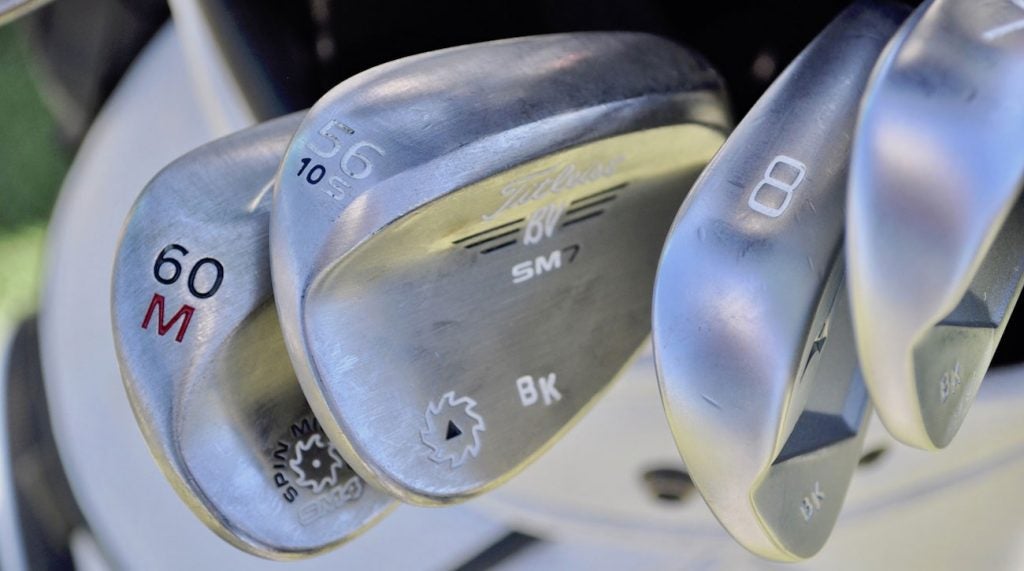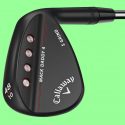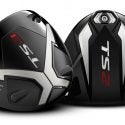 Sepp Straka’s winning Callaway driver? Here’s the next iteration of it
Sepp Straka’s winning Callaway driver? Here’s the next iteration of it
Yo, Gear Guy! What are the best high-launch drivers?
Welcome to another edition of Yo, Gear Guy!, an interactive GOLF.com series in which our resident dimplehead (a.k.a., GOLF’s deputy editor of equipment, Mike Chwasky) fields your hard-hitting golf gear questions. This week he tries to identify the best high-launch drivers, explains increasing wedge lofts and more.
Mtrubis on Instagram: My new irons have a 47-degree gap wedge, which seems crazy. How many other wedges do I need to fill out my set?
The significant strengthening of iron lofts over the years has definitely created some gapping related challenges at both the long and short ends of the set. On the long end the transition from the shortest fairway wood (often a 4- or 5-wood but sometimes a 3) to the longest iron has changed dramatically, with a 4-, 5-, or even 6-iron now taking the place of a 2- or 3-iron as the longest. The gap created at this end has a pretty straightforward solution in the form of hybrids and/or driving irons that cover the 18- to 25-degree range comfortably. Obviously clubs in the lower range of lofts are less exacting in terms of distance control for most players and don’t need to be quite as specific in how far they go.

On the other side of the set, which you are referring to, the strengthening of lofts due to the development of high COR irons with deep and low CG locations has yielded pitching wedges that often log in at 45-degrees or less (old school PWs were in the 48- to 50-degree range) and also mandated gap wedges like yours that typically now measure around 48-degrees (or 47 in your case). This can create some major gapping issues on approach shots and even some short game shots if your only other wedges are 56- and 60-, which used to be fairly typical. The easiest fix for you or anyone with a modern, strong lofted iron set is to fill the gap with a second gap wedge that has around 52 degrees of loft. That’s what the old “gap wedge” used to be when PWs were 48. The key to making sure you have enough wedges is to avoid gaps larger than four or five degrees (I like four degree increments, personally).
As a side note I’d add that I’ve heard a surprising amount of complaints and cynical remarks regarding modern iron lofts, as if gear manufactures are trying to bamboozle players into thinking they can hit a 7-iron as long as their old 6 or 5. There’s actually a very good reason why modern irons are so much stronger than their outdated brethren – flexible, high COR faces that add ball speed and forgiveness also increase launch angle quite a bit. So if lofts were not made stronger, shots would simply fly too high to be optimal.
Drabica12 on Instagram: I got fitted for a 16.5-degree TS2 fairway wood but the fitter says I should get the 15 degree for more flexibility – what should I do?
Good for you for getting fit, but without knowing the specifics of your setup, swing, and overall launch monitor numbers, it’s pretty difficult to answer your question. I’m assuming the 16.5-degrees of loft was suggested for your primary fairway wood rather than 15 because it produces better distance gaps for you and probably gives you the best balance of performance off the tee and off the turf. These days that situation is more common than ever as fairway woods, like drivers, feature high COR designs that spin less and tend to fly longer with the addition of more launch angle.
If your fitter recommends the 15-degree 3-wood instead of the 4-wood there are probably a few reasons why. The most likely reason is you might be in between a bit, and he or she thinks you might want to strengthen your setting at times to use the club at 15-degrees even if your primary use is at 16.5. The second reason is probably that the 15-degree has a volume of 175cc while the 16.5 is a bit smaller – better for the fairway but not as good from the tee. Another consideration is face angle. A lot of players don’t grasp the fact that when you add loft to a given wood you have to close the face a bit, making it easier to launch and easier to hit right-to-left. The opposite is true when you reduce loft – you open the face, which makes the club harder to launch and harder to draw. In your case I’m betting the fitter thinks it would be more useful to have a club that will either be a bit draw biased (the standard TS2 set up) or even a bit more draw biased (when you weaken it to the 16.5-degree setting). Regardless of why you got the advice the best thing to do is get the 15-degree model.
ADVERTISEMENT
TRbussie54 on Instagram: I’ve lost some swing speed and I’m looking for a new driver that will help me with launch, and distance. Any recommendations?
Funny you should ask, as just about every single driver made today, other than the specific low spin models, are made to do just what you want. That being said, I understand your predicament and it’s not the least bit rare – as players age, amass some injuries, or both, a loss of flexibility, strength, and swing speed are common. Luckily equipment manufacturers are well aware of this fact and some currently offer lighter weight heads and shafts specifically designed to optimize performance for players like you. And though not every company offers a model like this yet, I can tell you (off the record, of course) that several have one coming down the pike in the relatively near future.

However, for the sake of understanding how lighter weight designs work, let’s take a quick look at one outstanding model from XXIO that’s available right now that might help you. It’s called the X (that’s Ten) and it’s admittedly expensive (about $650) but has all the technologies that help “moderate” swingers swing faster, launch it higher, and hit it longer. The X is put together like most premium-quality modern drivers with a high-quality multi-piece titanium clubhead and high speed, high flex very thin clubface.
But the big difference is the respective weight of the clubhead and super lightweight shaft that measures around 45.75″, the very long side of recommended length for most players. The overall weight of the club is about 270g, which is anywhere from 30g to 50g lighter than typical drivers, and the shaft is about a quarter inch longer than standard. The result for many players is faster swings that are also less stressful on the body, not only allowing for longer shots but also more of them without as much effort. This can benefit you not only during a round of golf but also on the practice tee. Of course I’m not suggesting you go out and buy a XXIO X driver (unless you want to – they’re really good), but I would advise experimenting with some of the lighter weight models currently out there and also the ones that are coming soon.
To receive GOLF’s all-new newsletters, subscribe for free here.
ADVERTISEMENT








